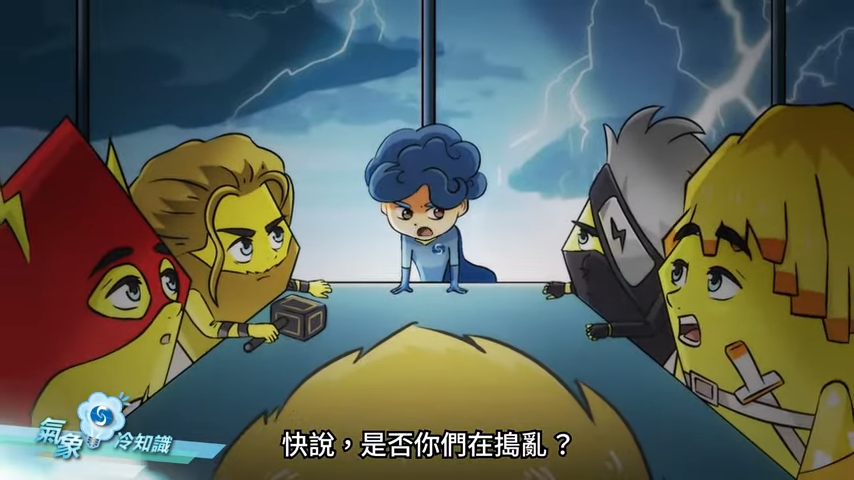Lightning Location Information
The image shows the lightning strokes, if any, detected by the Lightning Location Network in the past 30 minutes.
-
Lightning
Lightning is a severe weather phenomenon commonly seen in Hong Kong and could result in loss of lives and damage in properties. Whenever lightning and its associated thunderstorms is expected to affect Hong Kong, the Observatory will issue a Thunderstorm Warning to alert the public and relevant Government Departments to take suitable precautionary measures.When would Lightning Occur?
Lightning can occur when Hong Kong is affected by unstable weather systems, such as perturbations in airstreams, troughs of low pressure, or tropical cyclones. Lightning is an atmospheric electric discharge phenomenon, in which the large electric current flowing through the atmosphere generates a huge amount of heat energy and strong flashes. The energy also heats up the air and the resulting rapid air expansion could generate loud bangs, which are the thunders that often accompany lightning.
-
Why does lightningalways come before thunder?
A lightning flash and the associated thunder in fact occur at almost the same time in a thunderstorm. The reason why a person on the ground sees the lightning flash before hearing the thunder is because light travels much faster than sound. The former has a speed of around 300,000,000 metres per second, while the latter's is just 340 metres per second. Therefore at 1,000 metres away from a thunderstorm, a person would see the flash almost instantly after lightning occurs, but the thunder would need about 3 seconds (1,000 metres divided by 340 metres per second) to arrive.Try it!
As a rule of thumb, you can estimate your distance from the thunderstorm in kilometers by counting the seconds between the flash and the thunder and dividing the number by 3.
-
Answer: No.
Lightning strokes start from very high up in thunderstorm clouds, so objects on the ground have very little influence on their travelling paths until they come very close to the ground.
It is true that taller objects are more susceptible to lightning because of the shorter gap between the lightning strokes and the objects themselves. However, for any attraction effect to come into play, the lightning stroke has to get very close to the object, with the distance of influence roughly equal to the height of the object.
For example, a 4-metre pole can only attract lightning strokes which are less than 4 metres away. Therefore, do not assume that you are safe from lightning even if you see something particularly tall in your vicinity.Does lightning
only strike the
tallest object? -
Various ways
of being caught by lightningDirect strike
A cloud-to-ground lightning stroke directly hits you or something you are holding, such as a golf club or a fishing rod.
Side flash
Lightning strikes something, e.g. a lamp post or a mast, close to where you are and a portion of that current jumps from that object onto you.
Touch potential
You come into contact with an ungrounded object which has been charged by lightning, causing part of the current to pass through your body.
Step potential
Lightning strikes in close proximity to you, and its electrical current dissipates into the ground. There could result in a voltage difference between your feet causing a current to travel through your body.
Beware of lightning! Don't stand on hill tops or near any highly-conductive objects, and keep away from trees or masts which are likely to be struck by lightning. Since lightning current is conducted away through the ground, you should not lie down especially when the ground is wet. Instead, you should crouch down to minimise the area of contact between you and the ground.




